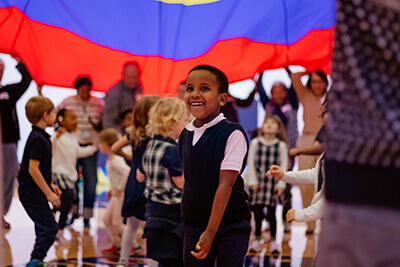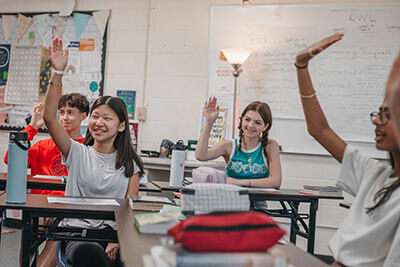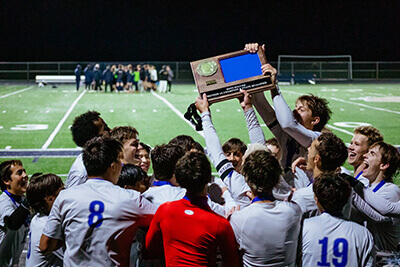November 3, 2025
 Examine core values when making school-choice decisions
Examine core values when making school-choice decisions
The average adult makes 35,000 decisions a day. While there is no research on how many decisions a working parent navigates daily, it is likely far more than that average. For parents, selecting the best-fit school for a child involves numerous considerations ranging from academic rigor to school culture. Every family must weigh these factors in relation to their values, hopes, and circumstances.
Many parents today have access to different school types such as traditional public schools, charter schools, private schools, religious private schools, parochial schools, and independent schools. Even within these categories, individual schools vary greatly in philosophy, instructional methods, and student experience. There is no universal best choice. Parents must determine the environment where each child will most effectively learn, grow, and belong; the answer might even differ within a family.
Deciding about school selection
Families often wonder how to thoughtfully approach a decision that holds long-term implications for their child’s education and well-being. Acclaimed decision coach Nell Wulfhart, who specializes in helping individuals navigate difficult choices, uses two exercises with her clients that translate effectively to school selection.
First, parents can create a list of daily-life values that matter most for their child, ranked in order of importance. These are not moral or religious values, but rather conditions that help a child feel engaged and supported such as individualized attention or freedom to explore multiple interests. Then, parents can evaluate which school options align most closely with those priorities. Second, parents can map out what they hope life will look like for their child and family in one, five, and 10 years and determine which school options align with the desired trajectory. Below, two families illustrate how clarifying core values guided them to their best-fit school.
 Being seen, heard, and known
Being seen, heard, and known
As a former middle school social worker, Mindy Ruane learned the importance of belonging during early adolescence. She wanted her children in a school where they would be “seen as individuals.” With this value in mind, Ruane enrolled her then-fifth, third, and first graders at Mounds Park Academy (MPA), a PreK-12 independent school in St. Paul. MPA has a total enrollment of 571 students, featuring an average class size of 15 and student-teacher ratio of 7:1.
“During the first week of school, I asked my son how he liked MPA, and he joyfully replied that ‘he got called on a lot,’” said Ruane. “Knowing that my children’s voices are going to be heard—and that participation is expected—has been transformational for my children. The school culture encourages students to contribute and take ownership of their learning.”
Cultivating interests beyond the classroom
For Kari Kunze-Hoeg and her husband, both of whom valued academics, athletics, and the arts, it was important that their daughters attend a school offering broad opportunities without pressure to specialize too early. Their daughters attended MPA from PreK through graduation and enjoyed the regular inclusion of world languages, the arts, physical education, technology, and more in addition to rigorous academics. In the end, their daughters (MPA ’22 and ’24) pursued basketball, volleyball, theater, and orchestra, and now both attend Wellesley College and play DIII volleyball together.
“At MPA, students are able to pursue multiple activities simultaneously and can achieve excellence,” said Kunze-Hoeg, who is also MPA’s Upper School Spanish teacher. “During my eldest daughter’s senior year, she advanced to the state competition in debate and participated in the state tournament in volleyball—during the same season—which was only possible given the supportive school community.”
Developing critical skills in the digital age
Ruane, now a fifth and sixth-grade English teacher at MPA, believes it is more important than ever for children to learn the writing process, read novels, and practice those skills daily.
“There is no way to entertain yourself to a good education,” said Ruane. “Students must do the work and put in the time to be strong readers, writers, public speakers, and critical thinkers. Too often students are reading excerpts of stories as opposed to full-length novels that force them to slow down and read for a sustained period.”
Ruane has students write in journals daily for 10 minutes straight to build their skills and stamina, so they have more confidence in formal exercises.
Choosing what matters most
Selecting the best-fit school for a child often feels like one of the most consequential decisions a parent can make. Prioritizing values and examining them through a longer-term lens can help parents identify the school environment that most closely aligns with the academic and extracurricular experiences they want for their child.